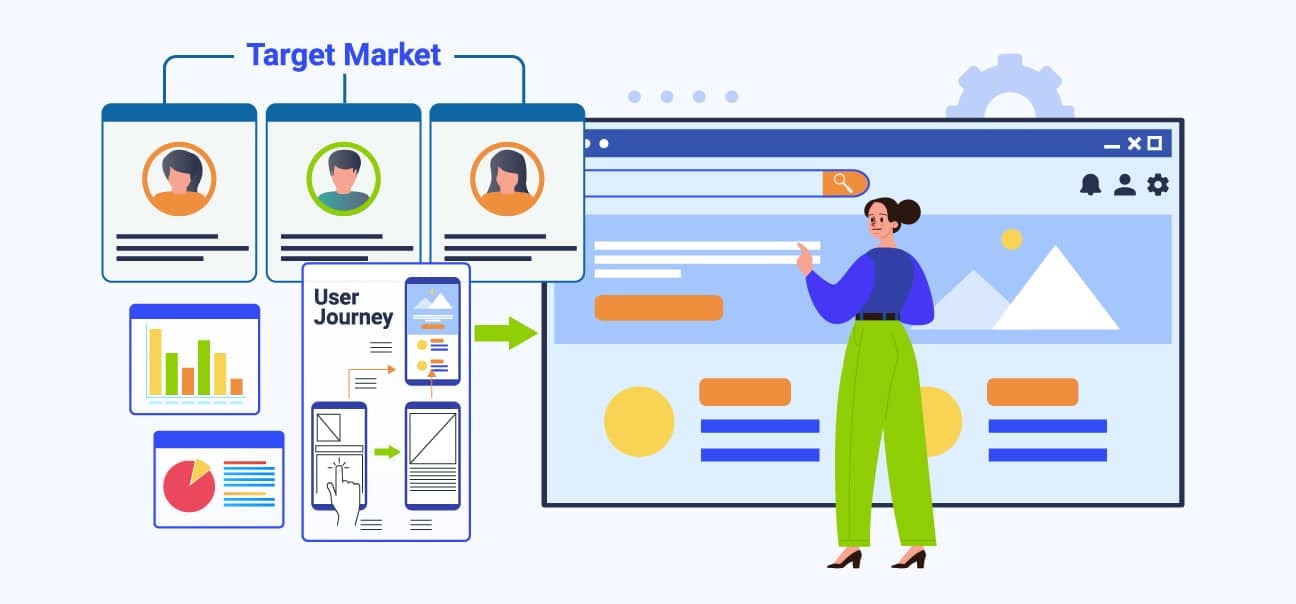What is a Proof of Concept (PoC) in Software Development?

You’ve probably already heard of proof of concept in software development.
But technically speaking, this is not exclusive to the software industry. Some sectors that also use proof of concept or proofs of principles are:
- Cybersecurity
- Manufacturing
- Healthcare
- Pharmaceuticals
- Science
- Engineering
- Entertainment
But for this post, we are focusing on how PoCs are applied in software development projects.
What is A Proof of Concept in Software Development?
A proof of concept (PoC) establishes the feasibility of an idea for a software product or solution. Some software companies treat PoC as a specific development process. It becomes a verification methodology that determines the viability of a software idea. It is an essential step in the early phases of the software product development cycle.
Types of Proof of Concept in Software Development
There are different types of proof of concept. These are the following.
- Pilot Project. When we say the pilot project, it means your PoC is good enough for initial implementation. In other words, this is the early version or beta version of your product.
- Proof of Technology. Proof of Technology (PoT) identifies technical issues. This is vital for it may affect the software product development process. These issues could have something to do with:
- Compatibility
- Feature functionality
- Integration with other existing software.
- Steel Thread. A steel thread is a more technical PoC. It does not only focus on technology. It also addresses the software design, architecture, and hardware requirements, among many others.
So there, we have answered the question: What is proof of concept in software development? Now it’s time to tackle another one: Why is a proof of concept necessary?
Why Do You Need a Proof of Concept?

There is no doubt that proof of concept is crucial in software development. It’s a must for every development team. It gives businesses and organizations a realistic view of the project’s feasibility. It helps manage risk and prevents teams from wasting time and resources.
To Validate the Software Product Idea
With a proof of concept, you can see tangible proof that your initial software business idea can materialize. You can immediately identify its technical feasibility and requirements. Above all, it shows you the value of your project to the end-user.
To Add Credibility for Attracting Investments
If investors pour funds into the proposed product, they need to see a business plan. They need to know their money’s worth. PoC adds credibility and attracts investments. How? This is through showing the product’s worth, marketability, and profitability.
To Identify Risks and Limitations Early
A proof of concept can detect potential risks. Furthermore, it can pinpoint the project limitations regarding technology, budget, or timeframe.
To Jump-Start the Software Product Development Process
PoC is a must for unique and complex projects that can help you present a solid business case. After all, it often comes with a product roadmap. With a product roadmap, you can outline the direction and the steps you need to build the product.
Proof of Concept Example

Let’s say you want to create a solution for customers who wish to buy weed tonics or CBD products.
To address this need, your PoC may center around a mobile app product locator for the said products.
One of the key elements that you may include in your PoC is a description of your proposed app’s features.
You may also start by highlighting the app’s potential to raise brand awareness. Likewise, do not forget to mention the mobile locator app’s benefits to the customers.
You can focus on how the app makes it easier for customers to find the nearest store selling CBD products.
Of course, this is just one proof of concept in software development example. Throughout history, there have been notable examples of successful proof-of-concept projects:
- One that immediately comes to mind is Satoshi Nakamoto’s 2008 white paper on Bitcoin. Technically, this is a public PoC. Nakamoto’s PoC built the foundation of cryptocurrency and blockchain we know today.
- Another excellent proof of concept example is Airbnb. Their story should inspire those wishing to turn a general idea into a global brand.
- In the very beginning, the iPad started as a proof of concept. Steve Jobs had asked for a “piece of glass” handheld device that he could use to check his email. Interestingly, the technology was first used in iPhone in 2007. The iPad’s release would later follow in 2010.
What is the Difference Between Proof of Concept, Prototype, and MVP?

Proof of concept is used interchangeably with prototype and minimum viable product (MVP). Yet, there are key differences between the three.
Characteristics of Proof of Concept
A proof of concept determines whether a software idea is workable. It checks whether the idea can become a functioning product or solution.
It includes a general description, proposed design, and software’s functionality.
An explanation of the concept’s real-life application is also included in the PoC.
In other words, it is a small-scope visualization of the product. But it focuses on establishing its feasibility, viability, and sustainability. Proofs of concepts can also serve as venues for exploring other related ideas. Developing a PoC could take weeks or months, but this isn’t the actual sample yet.
Also, please note that PoCs have intended users. These are the product development teams and research groups (R&D teams).
Characteristics of Prototype
A prototype represents a working model of the proposed product. It may be imperfect. Nonetheless, it is interactive enough to show that the proposed product is attainable.
A prototype can follow the design and basic functionalities set in the PoC. It takes weeks to come up with a prototype.
However, BIT Studios can offer UX and prototyping services within days. Its UX-first rapid approach makes the development 3X faster. That’s a huge difference compared to other custom software development services. Basically, prototypes are for developer teams, stakeholders, and a limited number of end-users. You can also build a prototype to convince potential investors to fund the project.
Characteristics of MVP
An MVP is an incomplete but functional version of the proposed product. It comes with enough features that actual users or early adopters can use.
An MVP is a helpful tool for determining the product-market fit. It allows you to gather user feedback that you can use to improve the final product. It could take months to release an MVP. Sometimes, the release date can extend since gathering feedback may take time.
Summary of Differences: Proof of Concept vs. Prototype vs. MVP
| Proof of Concept (PoC) | Prototype | MVP |
| • Presenting general description and feasibility of proposed product • No sample may be needed • Not for end-users but product development and research teams • Focusing on feasibilityWeeks or months to make | • Working model of proposed product • For software developer teams, stakeholders, and limited end-users • Demonstrating that the proposed product can be built • Weeks to make | • An incomplete but functional version of the product • Intended for use by end-users • Determining product-market fit based on early users’ feedback • Used to gather feedback to fine-tune the final product • Months to make |
Creating a Proof of Concept – Key Steps
The effectiveness of a PoC will decide if your software product will materialize. For a quick guide on how to create a proof of concept in software development, keep on reading below.
Step 1: Define the Need
Look closely into the users’ problems and then identify what their needs are in real life. Market research is always vital to everything.
Of course, it helps immensely if you get in touch with your target audience. Listen to your potential customers to gain an understanding of their problems. This will help you develop effective solutions.
Step 2: Ideate the Right Solution
Start brainstorming ideas based on the defined need and identified pain points. In the early stage of brainstorming, you can try to explore any software idea. But eventually, you need to trim your list of concepts. Be sure to include only those with a high degree of feasibility. When determining the feasible software idea, consider the following:
- Financial resources – Do you have the budget to cover all the costs? In case you need further development, can you afford it?
- Time – When do you plan to release your software?
- Tech stack – Do you have the technology to build your project? Can you do it in-house? Or would you need help from third-party developers?
Step 3: Create a Prototype
After defining the need, it is now time to check if you can bring the software idea to life through a prototype.

Different Types of Prototyping
- Rapid prototyping (aka throwaway prototyping). When it comes to rapid prototyping, you build a working model quickly. It is a cost-effective prototyping solution for those with limited time and budget.
- Evolutionary prototyping. Evolutionary prototyping is an iterative process. Here, the prototype “evolves” over time through refinements and rebuilds.
- Incremental prototyping. It involves creating separate working models. Over time, these individual prototypes are combined into a newer, more improved version.
- Extreme prototyping. Used in web application development, extreme prototyping consists of three stages:
- Developing a static prototype
- Simulating the data processing via a prototype services layer
- Integrating the services layer
Step 4: Test the Prototype and Gather User Feedback
Always avoid building a poorly tested prototype. You shouldn’t ignore proper prototype testing. You need to get the feedback of your users.
This will help you improve your product. Moreover, you will know whether your software idea will materialize and thrive.
You can generate user feedback by having a sample group use the prototype. This sample group can include stakeholders or potential users (your target audience). When gathering user feedback, you document all the responses completely and immediately. Don’t ignore pain points.
During the testing process, it is common to use project management tools. We recommend using the ones that are cloud-based. They’re accessible, provide visibility, and encourage collaboration.
Step 5: Create a Roadmap
To create a roadmap, you need to collect all the data, insight, and user feedback.
This roadmap will not only dictate your actual product development strategy. It will also allow you to map out all the essential stages in the software product development lifecycle such as:
- Planning
- UI / UX design
- Development (coding)
- Testing
- Deployment
- Maintenance and support
Summary
Crafting proof of concept in software development is a must. This will determine whether your software product idea is technically viable.
A PoC is different from a prototype or a minimum viable product (MVP). A PoC is more concerned about the feasibility of a proposed product concept. It influences how you build your future product prototypes or MVPs.
Proper PoC development involves following specific steps. It would be best if you first define the customer’s need before ideating the right solution for that need.
After the ideation, build a prototype and test it to collect valuable feedback. Document all user feedback and use those insights to create a roadmap. That roadmap should direct your product development strategy. Also, it should outline your software development cycle.
Do you need help in building a proof of concept for software development? Contact BIT Studios today.
Proof of Concept FAQs
When does the need for Proof of Concept arise?
The need for proof of concept in software development arises when the developers need to show that a particular software solution is viable and that it will work as intended. POCs are typically used to assess new approaches to see if they can be used to solve a specific problem.
Can you develop software without a Proof of Concept?
Yes, you can develop a successful product without a proof of concept. But just because you can doesn’t mean you should.
Without proof of concept, you run the risk of wasting time, effort, and money. You will be at risk of putting more effort into something you might not be able to build in the first place.
How do you evaluate a Proof of Concept?
There is no easy way to evaluate a software development proof of concept. You can start by considering how to build your tech team. Think carefully about which professionals to partner with. Should you bring in software developers? Or would it be better to include project managers? Identify the specific need and have your team scrutinize it.
Examine your project parameters like scope, timeline, and budget. Knowing your constraints should help you define your success goals. But don’t forget about the metrics to measure success (desired output, business value, net promoter score, etc.). You can also run test scenarios to evaluate your PoC.
A good example of a test scenario is simulating the environment in which your product will run. Lastly, gather all stakeholders to review and analyze test results. Use this opportunity to improve your proof of concept in software development.
We’re BIT Studios!
At BIT Studios we specialize in designing, building, shipping, and scaling beautiful, usable products with blazing-fast efficiency



